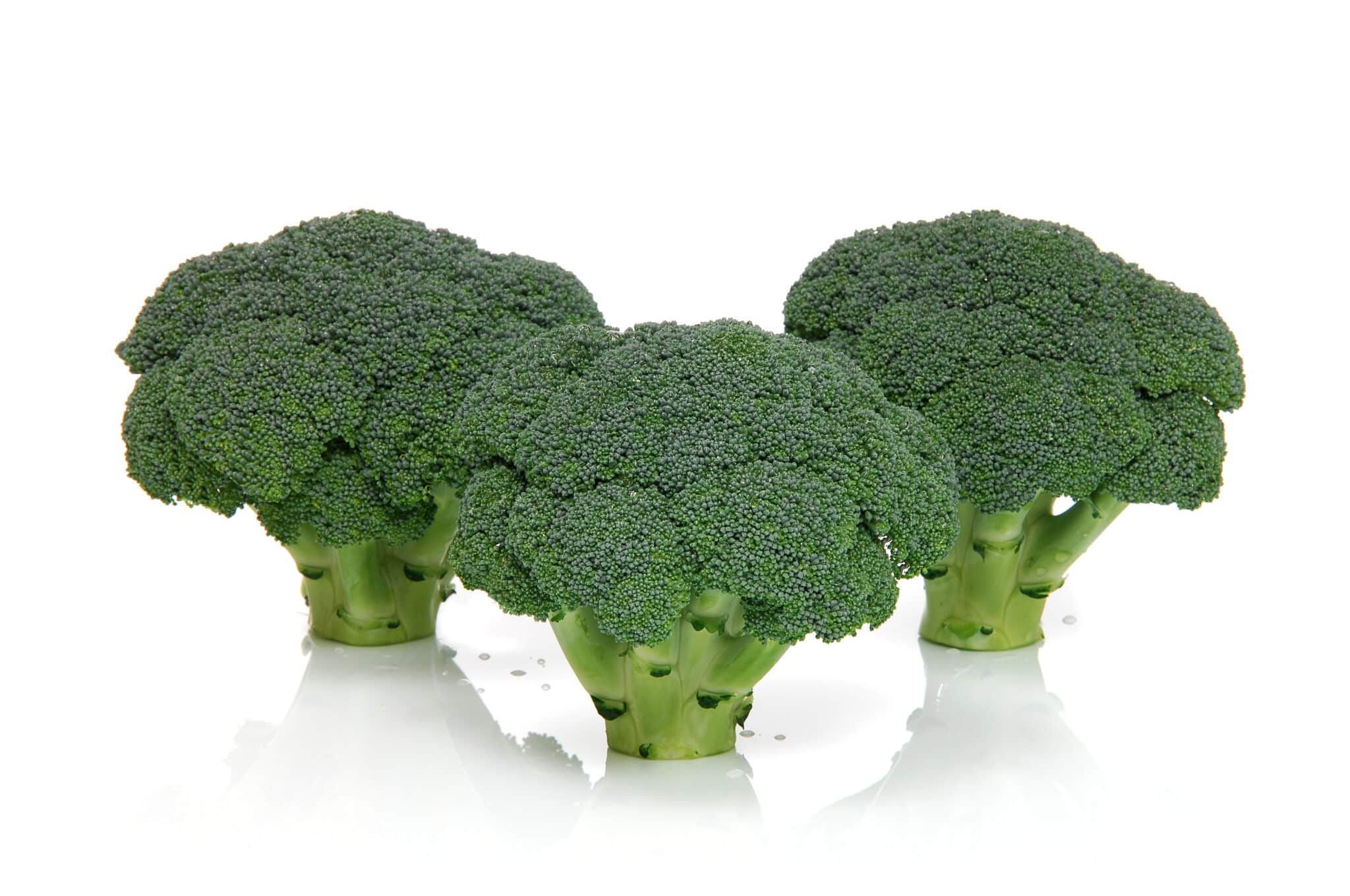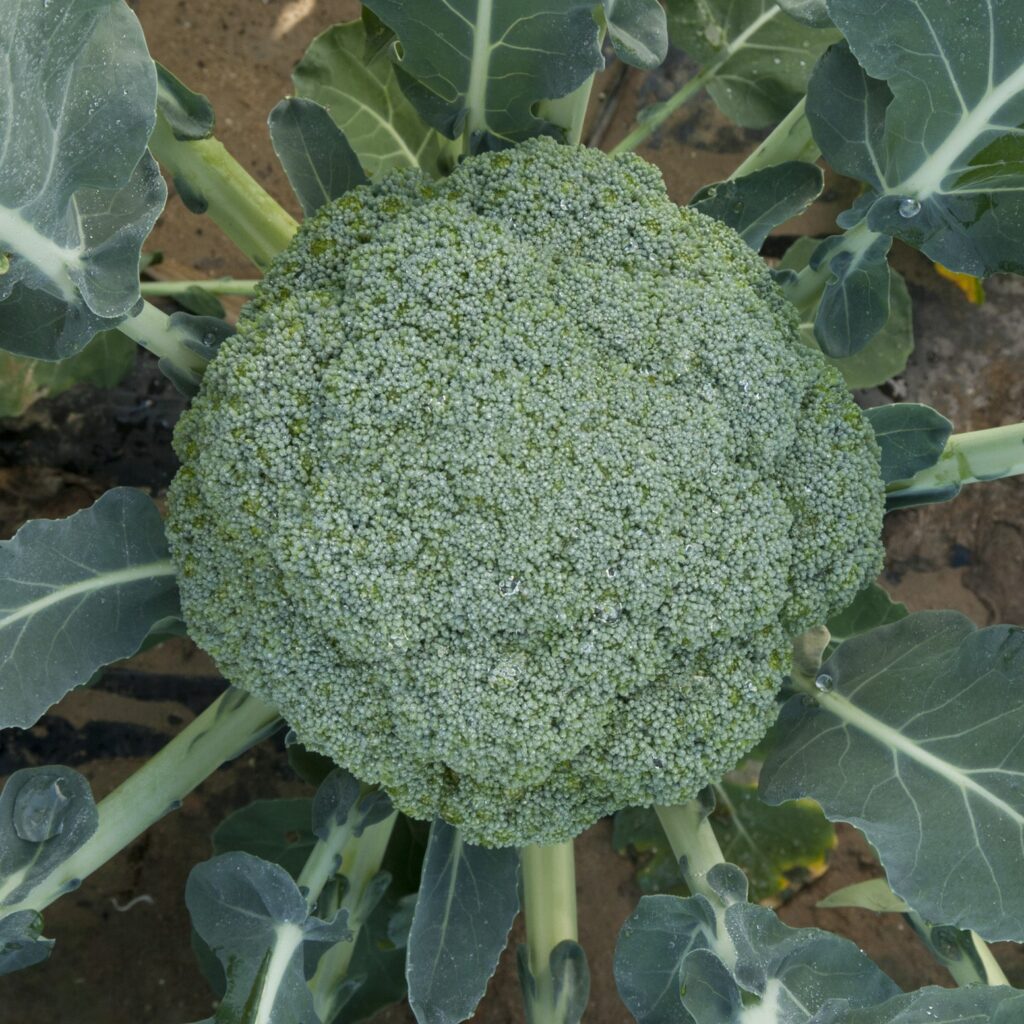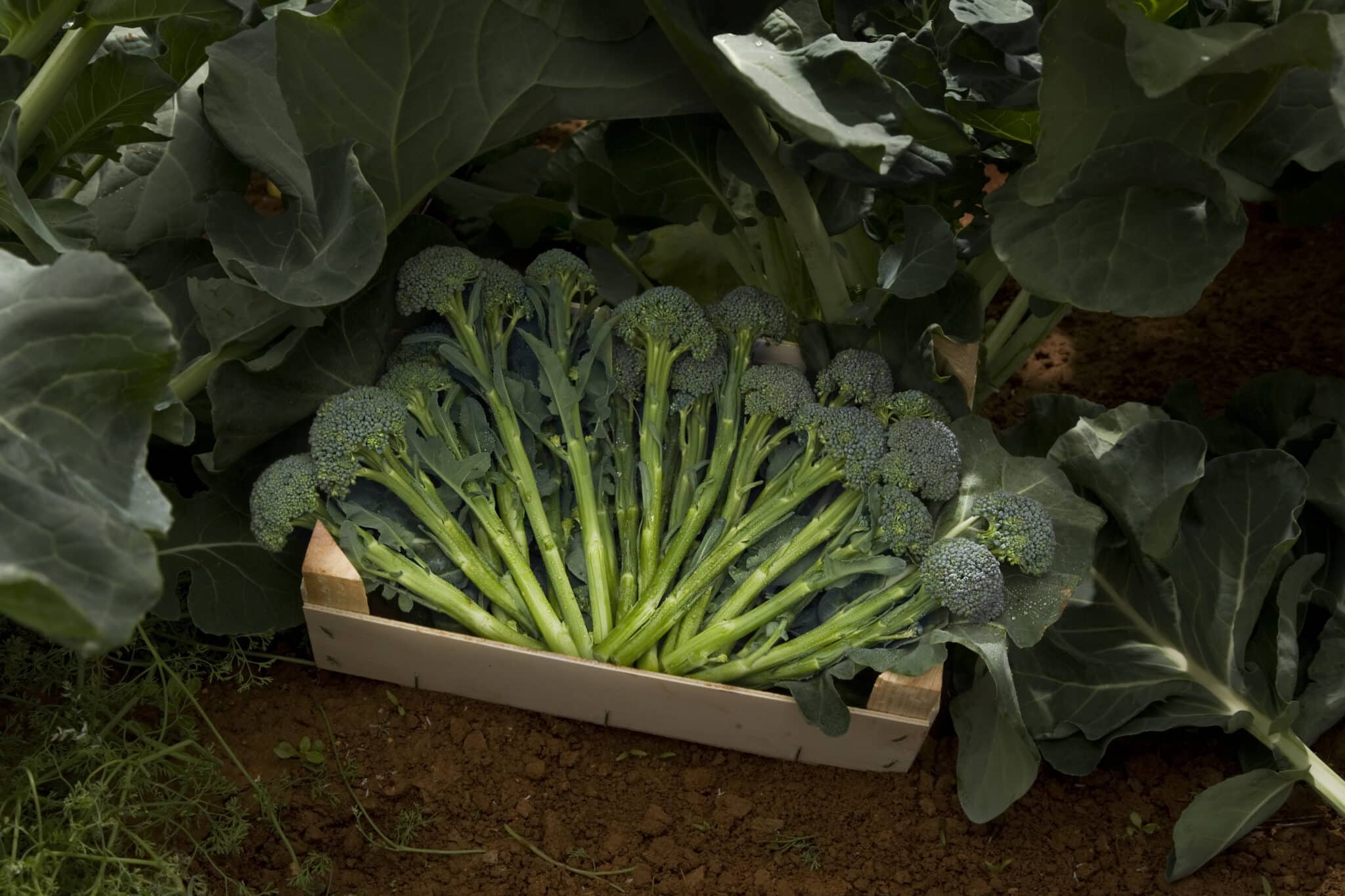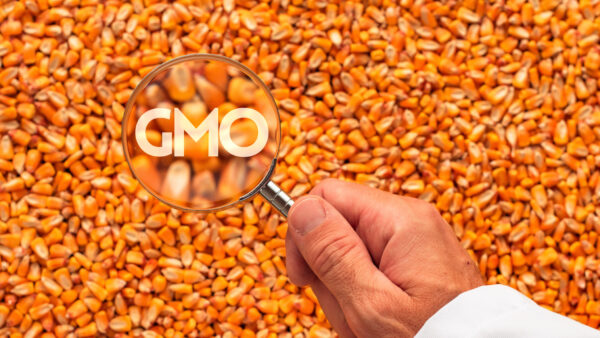Loved by some, revered as a ‘superfood’ and loathed by others. That’s broccoli, an edible green plant in the cabbage family whose large flowering heads are eaten as a vegetable. It is classified in the so-called ‘Italica’ cultivar group of the species Brassica oleracea, to which all cabbages, cauliflowers, kale and several other species belong. The crop resulted from domestication of cultivated Brassica crops in the northern Mediterranean starting in about the 6th century BC. And since the time of the Roman Empire, broccoli has been commonly consumed among Italians. Two thousand years later, broccoli has become an appreciated vegetable all over Europe, and according to the FAO in 2016, the global production of broccoli (combined for production reports with cauliflowers) was 25.2 million tonnes. Did you know that the word broccoli comes from the Italian plural of broccolo, which means “the flowering crest of a cabbage”, and is the diminutive form of brocco, meaning ‘small nail’ or ‘sprout’?
In order to get a better handle on how to breed a new broccoli variety, European Seed spoke with Mark Schrijnwerkers, broccoli breeder at Syngenta; Meindert Boon, broccoli breeder at Bayer, Johannes Pfeifer, Brassica Product Manager at Sakata and Gregorio Padula, managing director at Tokita Sementi Italia.
European Seed (ES): In most crops, yield and resistance are paramount breeding targets. How is this in broccoli?
Meindert Boon (MB): Yield is one important driver in broccoli breeding that can help meet growers’ needs. Yield can be defined by individual head weight, harvestable heads, or number of boxes per acreage in certain markets. Varieties that do not meet yield specifications will not provide growers with a sufficient return on investment and are generally not successful. Resistance is another important driver in broccoli breeding and secures successful harvests for growers.
Gregorio Padula (GP): For broccoli it’s one of the objectives, but I wouldn’t call it as a paramount target. We believe that yield may be important for processing purposes but not for the fresh market since consumers buy per heads. Due to its agronomical and botanical aspects, and growing area, it is less subject to disease pressure.
Mark Schrijnwerkers (MS): Yield and resistances are important, but consistent and reliable quality of broccoli head is more important. The majority of the broccoli is produced for the fresh market (85%). The head weight is determined by the market of consumption, but roughly between 350 and 500 grams. Most broccoli varieties meet this yield demand, but lack the head firmness, have a purpling head or a hollow stem. These are all characteristics to drop a variety. Yield is important for the industry market e.g. Poland and Mexico. However, these markets prefer broccoli varieties that can meet both industry and fresh market demands. These dual-purpose broccolis can be sold in both markets, dependent on the market prices. Resistances are very important as growers are very interested in using less crop protection. The phytopathology department is continuously looking for resistances against a wide range of diseases and pests.
Johannes Pfeifer (JP): Quality characteristics are important for growers: yield is surely the major argument, which needs a reliable answer for the presentation of a broccoli variety. In the end, yield is the single head weight – most markets are asking for 500g heads – multiplied by the plants per acreage. If the head size is the fixed component, then the capacity of harvested heads must be as reliable and as high as possible. Therefore, our company has a strong focus in uniformity and vigour of the plants. Yield is immediately followed by external quality: our breeders need to take care about an appropriate appearance of the crop, e.g. fine and dark green colour of the beads, absence of brown beads and cat eyes, and a good and stable stem to carry the heavy and smooth head, without side shoots.
ES: How important is taste in broccoli breeding?
MS: Taste is of less importance compared to quality traits such as shelf life. However, the market for tender stem broccoli is growing rapidly. Tender stem broccoli is much sweeter compared to normal broccoli, but the product is also different. In normal broccoli, the inflorescence is consumed, whereas in tender stem broccoli, the stem and inflorescence are consumed, and the sweetness is mainly located in the stem tissue. Our company is developing varieties for this market.
GP: Taste is important for consumers but not enough important for them to select varieties yet.
MB: Taste is an important topic, but what is a good taste? This varies by individuals, customers and regions. In the Brassica family, there are crops, like Brussels sprouts, with a somewhat unique taste which is appreciated by certain consumers, but other consumers prefer the milder and sweeter taste found in broccoli. Under our Bellaverde® brand, we have launched varieties like Sibsey, which is sweeter, crunchy, and has an appealing uniform green colour.
Continuing on taste, it is good to mention that we have also developed ‘ease of floretting’ broccoli types to meet customer preference. These varieties can be compared with a traditional crown type of broccoli, but differ by having separate florets with longer stems, making it easier to cut and prepare. Florets and stems have an attractive green colour, a milder and sweeter taste, and crunchy bite. We recently launched the “Skytree” variety and we have more ‘ease of floretting’ types in the pipeline.
ES: Broccoli is famous for some of its health components, like glucoraphanin. Do you breed for such components?
JP: With health awareness and the awareness about what we are eating or where it comes from, another aspect of broccoli arrived in the focus of breeding. Not only that the accepted levels of residues of agricultural chemicals are continually decreasing or are more and more absent, it is also the content of healthy ingredients, which the consumer is looking for. By nature, broccoli has already a high level of different glucosinolates, which by regular consumption can help prevent different cancers according to research available today. So, this is another breeding target from the past years: to increase the level of these glucosinolates and also increase the level of tasty components of broccoli. It is not only the health aspects that our breeders have in their focus, it is also the pleasure to eat broccoli.
GP: The consumption of broccoli is increasing also because of its intrinsic healthy nutritional characteristics, so an eye on this is aspect could be valuable, but at this moment of our breeding program it’s a not a key factor.
MS: No, we are not breeding for this in broccoli.

ES: More and more broccoli varieties are entering the market that are easier to harvest, and some even fit for mechanical harvest. What is your company’s take on this breeding goal?
MB: For us, there is no doubt that products providing ease of harvest are the way to go. For growers, organizing, availability, and cost of harvest labour and product processing are among the biggest challenges today. We identified this trend many (25+) years ago, started to develop a genepool, then bred for varieties with ‘ease of harvest’ features. Recently in U.S. we launched ‘ease of harvest’ varieties Eiffel and Hancock under the High Rise® broccoli brand. Over time, more growers will transition to machine harvesting and these ‘ease of harvest’ features are a great addition to any broccoli grower’s product portfolio. One broccoli harvest crew stated after hand harvesting one of our High Rise® broccoli brand varieties, that “… harvesting High Rise® is more pleasant and easier; better work posture and goes much faster.” Our aim is to completely convert our product pipeline into ‘ease of harvest’ varieties. Also, in our breeding scope is the ‘ease of floretting’ feature. This also makes it easier to process products and provides a product which is desired by consumers.
MS: This is correct, and also our company is working on it. We have roughly two types: multifloret and easy harvest. The multifloret broccolis are branded as Easybroc. Currently we have a variety named Monflor. Multifloret broccolis have a flat but exposed head, with many florets. These broccoli heads are harvested and the floretting can be done in the field, simply by putting the heads on a conveyer belt and having a blade make a cut a few centimetres below the head. By this, the broccoli head will fall apart in many smaller florets. Multifloret varieties reduce a lot of labour costs for the floretting. We are also developing varieties that are a combination of multifloret and tenderstem. Easy harvest types have a more exposed broccoli head, with easy leaf pealing. Our company is developing these types, but the overall quality is challenging, and also the yield is not always reached because of the slim stem.
GP: Most of the characteristics needed for a mechanical harvest (such as tall and upright plants, uniform maturity, less foliage, field holding capability) are basically targets also related to hand harvest so yes, we are focused on this aspect.
ES: What other breeding targets do you spend your time on for broccoli in Europe?
GP: The main goals, and what we consider as common goals, are earliness, disease resistance, uniform maturity, compactness of the head, colour. One important target is to breed material that has the attitude to adapt and grow in different environments.
JP: Features of better broccoli varieties are various. Different requirements are asked for and need to be integrated in new varieties. For example, an important group of features lies in the management of broccoli production. A strong behaviour at varying environmental conditions and diseases is important to facilitate a good availability of broccoli. Our breeders are looking for varieties, which give strong results for the growers, if growing conditions are tough for the plants or not. An example are broccoli varieties, which form a good head under cool-wet or hot-dry conditions.
MS: Field standing ability and shelf life are important broccoli traits. Field standing ability is the holding of the broccoli after reaching full maturity. Broccoli will go to flowering quickly, beads will turn brown, and the head is also very sensitive to diseases like bacterial soft rot or botrytis. So, the grower would like to harvest the broccoli as quickly as possible from the field, but this is often not possible because of the many fields to be harvested in a single week. Our company is aiming to have a good field standing ability at least 5 days after harvest.
Broccoli heads can be stored in the cold room for several weeks, the quality is preserved at 4-5 degrees Celsius. But the heads can quickly lose quality as soon as it goes into the distribution chain, supermarkets and finally the end consumers. So, we are also working to improve the overall quality of the broccoli head, not only at harvest time, but in the period before consumption.
ES: Which kind of investment does it take to develop a new broccoli variety?
MS: It takes at least six years to develop broccoli varieties. As a reference, I am now six years a broccoli breeder in my company and no broccoli variety developed from my breeding program is commercially available. Some are in the later stages of market trialling and may be introduced within the next two years.
GP: We invest a significant amount of money and time to improve variety performance and to improve seed productivity, quantity and quality.
MB: Developing new varieties is costly, estimated in the millions of euros, and takes time, up to 25 years, depending on the complexity of inheritance of specific traits. It is very important to have a clear vision on market developments, focusing on becoming a player or trend setter within a specific market. Fortunately, we are operating our seed programs with a cross-functional team of experienced breeders, each having 30+ years of experience in Brassica breeding. Our germplasm is updated, and we have excellent customer relationships. These are critical components in developing a strategy for innovative products that meet the future needs of growers and consumers.

ES: How does your company make sure your future varieties are aligned with what growers want?
MS: Our Breeding Trial Specialists test our newly developed varieties in target markets around the globe to identify good candidates. These candidates are then included in pre-commercial trials at growers by the marketing department. A lot of information on desired traits, resistances, and new trends is continuously fed back to the breeding department.
JP: When breeding broccoli, our breeders benefit from their good contacts with growers in different countries all over the world. Locally, the breeders are looking to exchange with all the players of broccoli – nurseries, growers, packers, shippers, freezing companies, managers in supermarkets, consumers – to select the best adapted new variety for all broccoli lovers. Such a communication and exchange are essential for our breeding and it cannot be replaced by anything else. This follows our slogan of Quality, Reliability and Service.
ES: What is the biggest challenge for a breeder when developing a new broccoli variety?
JP: Important for growers is the question about all kinds of production costs. One example: season workers are more and more difficult to find, and as labour costs and salaries are increasing, all features to get an easier and faster harvest need to be considered by our breeder, when looking for new varieties. But it must be done additionally, not losing the present characteristics. This is very likely the challenge for every breeder in their daily work: maintaining the usual characteristics and anticipating new targets, which will be important in the next years. As plant breeding, from the very beginning of a variety until the launching of commercial seeds can take 20 years or more, this is the crucial point of breeding.
GP: This is a very important aspect of the breeding, understanding growers’ needs is the key factor for making breeding successful. We spend a lot of time and effort visiting growers and production areas. Moreover, we collect material in order to study the characteristics of the existing varieties. In addition, climate change is a challenge for breeding and seed production.
MB: Developing varieties with broad performance and stability is the biggest challenge for breeders. Varieties that can perform in different climate conditions help secure predictable harvests for growers, potentially enabling broccoli to be a profitable crop for growers. Today we are facing an increase in climate extremes. Heat, drought, and erratic rain conditions are all challenges for growers. These types of extreme weather events can result in decreased product quality as crops may be unsuitable for consumers if they do not meet desired market specifications. We have organized our breeding program on a global basis and have R&D facilities in major production areas. This enables us to develop and combine genepools from many locations, helping our breeders better develop varieties with broad adaptability.
MS: Consistency and reliability. Most of the broccoli variety stay in the market for a long time. Growers know these varieties; they know how to grow them and what they can expect.
ES: How has the yield increase been over the past years?
GP: Yield is a characteristic that is linked to several aspects: genetic, area, growing season. We are of the opinion that the yield has increased during the years, but this is mainly related to the availability of more varieties that could better perform in specific seasons and areas.
MB: Over the past few decades, we have seen tremendous increases in yield. For example, looking at the development of yield in our ‘ease of harvest’ program, the prototype developed in 2004 yielded on average 250 grams per head. In 2015, our breeders developed the Titanium variety which can produce up to 600 grams per head. Instrumental in helping to create this increase is our germplasm and breeding strategies. Also, the use of fingerprint technology enables a shift from phenotypic to genotypic selection and allows us to evaluate and utilize our genepool more effectively. We believe this is an important step that will further improve yield and adaptability for new product launches.
MS: Yield per se is not an issue, but the percentage of harvestable heads is. A higher percentage of harvestable product means the grower has more to sell.
ES: Which diseases are most important in your breeding work?
GP: Basically, all are important and are targets for our breeding work.
MS: Downy mildew, clubroot, Alternariaspecies, and Albugo candida, with Alternaria becoming more and more an issue in broccoli production.
JP: We are working to improve varieties against the most important fungi like Plasmodiophora brassicae (Clubroot), Peronospora parasitica (Downy Mildew), Alternariaspp and Albugo candida (also named ‘white blister’).
MB: Fungal diseases including (Systemic) Downey Mildew, Alternaria (pinrot) and Albugo candida (white rust) are most important. Bacterial diseases like Erwinia and Pseudomonas cause bacterial soft rot. Physiological disorders lead to hollow (brown) stems, caused by irregular growth due to fluctuations in temperature and erratic rainfall. Over the past years, no new diseases have been discovered, but Systemic Downey Mildew and Alternaria have become more prevalent.
ES: Creating diversity for your growers and customers is of course very important. Where do you go to find the necessary germplasm that will help you in your breeding work?
MS: Our company has broccoli breeding based in Europe, Asia, and America. Our international team shares germplasm on a regular basis, in a manner consistent with biodiversity laws. But we also work with universities and institutes to improve our germplasm. The main source diversity is commercial varieties, but some traits such as resistances are also taken from other Brassica oleraceacrops and Brassicaspecies.
GP: This is where a breeding activity starts from, and basically collecting commercial varieties and landraces around the globe is the main source we have to create and enlarge our germplasm bank.
JP: As all this breeding requires to keep the focus on more and more aspects, we need tools like marker technology to get characteristics more easily and faster into new varieties. Our breeders have recognized the importance of broccoli already very early and collected a large range of germplasm, which is the base of our current breeding. Backcrosses with other Brassica species can also help to introduce new features.
ES: Do you find that you have sufficient access to new germplasm, or has this been made more difficult because of the new regulations on access and benefit sharing?
GP: Nowadays it has become more difficult, nevertheless there are chances to source from public institutes.
MS: The Nagoya Protocol made it more difficult to receive and share genetic materials globally. For countries like Brazil, China and India, it can take a long time to get approvals for shipping seed in and/or out. But we have access to extensive public germplasm collections available in the EU and USA.

ES: What innovations (technological, genetic, molecular etc.) are in the broccoli breeding pipeline?
JP: If we compare to some other crops, the variability in broccoli is not very high. Accordingly, real innovation is not easy to achieve. One new target was to find varieties which have a clear green colour, and which do not react with purple colour (anthocyanin) of beads and stem under stressing conditions. For this problem our company can already offer a variety and in the future, there will be more varieties with this feature.
MB: Innovative technologies are critical tools for developing new, competitive varieties and ground-breaking ‘ease concepts’ mentioned earlier. Examples of innovative technology we have in our toolbox and that have commonly been used within the industry include:
- Use of genetic markers for fast, efficient selection and incorporation of new traits,
- Fingerprinting of lines and genepools to identify genetic variation, and
- Use of double haploid lines, to develop large numbers of genetically uniform lines.
MS: Broccoli breeding innovations are clubroot resistant varieties, multifloret varieties and systemic downy mildew resistant varieties.
GP: The innovations are basically all of a technological, genetic or molecular nature. In the pipeline of our broccoli breeding are widely adaptable varieties, disease resistance, heat resistance and of course typical characteristics related to the plant phenotype.
Facilitation Of The Harvest
Making the harvest more efficient is an important breeding goal in broccoli. This concept started in the early 1990s, followed by discovery and development of germplasm with traits contributing to the desired prototype. Breeders have a long history in broccoli breeding and often a product pipeline dating back many decades leading to a rich and diverse germplasm pool. Based on the diversity in the germplasm, material was selected with relevant traits and stacked into elite lines. These lines were used to develop a prototype. In 2004, the first successful machine harvest tests were conducted with the prototype. This was a critical step providing the confidence to continue investment in the ‘ease of harvest’ program. The ‘ease of harvest’ features have become base traits in broccoli breeding and many future varieties will include these traits.
The ‘ease of harvest’ concept is a combination of characteristics and traits and may include:
- Uniformity: to limit number of harvests per field with the preferred goal of a single machine harvest.
- Clean stems; to limit the leaf trimming, additional benefit is absence of leaf scars which avoids oxidation and improves shelf life.
- Exerted heads: to improve the visibility of the product for harvest.
- Erect compact plant types: to limit plant-to-plant competition and to improve harvest uniformity.











